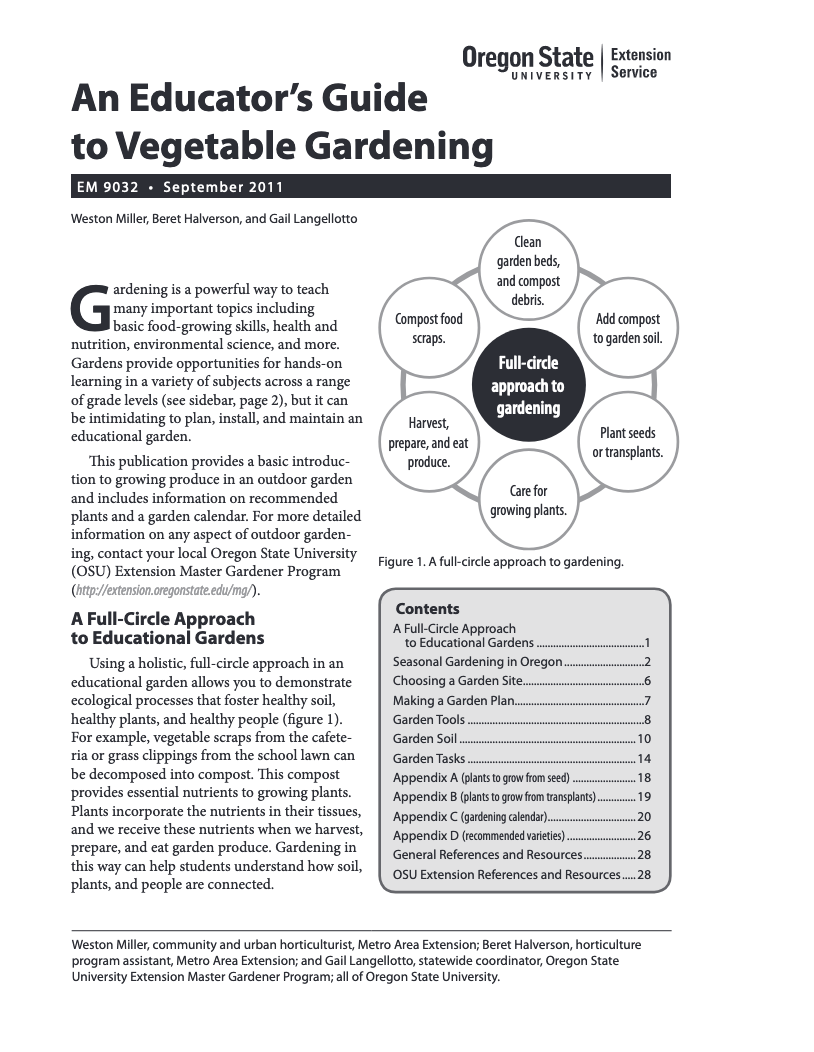Summary
This publication is a primer on vegetable gardening written specifically for educators, including those who use gardens as part of a nutrition education curriculum. It outlines a full-circle approach to educational gardening, provides a basic introduction to growing produce in an outdoor garden, and includes information on recommended plants and a garden calendar.
This publication is printed to order and shipped directly from OSU Printing & Mailing Services. Please allow up to 10 business days for delivery.
